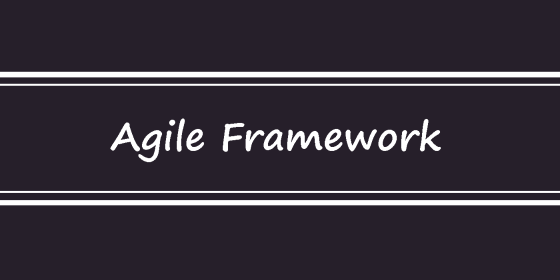Agile Framework

An Agile Framework is a structured approach to implementing Agile principles and practices within an organization. It provides a set of guidelines, roles, ceremonies, and artifacts that help teams and organizations adopt and scale Agile methodologies effectively. Agile Frameworks are designed to improve collaboration, flexibility, and responsiveness, enabling teams to deliver valuable products and services to customers efficiently.
There are several Agile Frameworks available, each with its own specific characteristics and suitability for different types of projects and organizations. Some of the most widely used Agile Frameworks include:
- Scrum: Scrum is one of the most popular and widely adopted Agile Frameworks. It emphasizes iterative development, regular inspection and adaptation, and a strong focus on delivering value to customers. Scrum consists of predefined roles (Product Owner, Scrum Master, Development Team), ceremonies (Sprint Planning, Daily Stand-up, Sprint Review, Sprint Retrospective), and artifacts (Product Backlog, Sprint Backlog, Increment).
- Kanban: Kanban is a visual Agile Framework that emphasizes continuous delivery and flow of work. Work items are represented on a Kanban board, and teams use work-in-progress limits to manage their capacity and focus on completing tasks before starting new ones.
- Scaled Agile Framework (SAFe): SAFe is designed for scaling Agile practices across large enterprises. It provides a structured approach to aligning multiple Agile teams, managing dependencies, and coordinating work at the portfolio, program, and team levels.
- Large-Scale Scrum (LeSS): LeSS is another framework for scaling Agile that focuses on simplicity and minimizing unnecessary overhead. It aims to create a single, cohesive product development organization by scaling Scrum principles.
- Disciplined Agile (DA): DA is an Agile Framework that provides guidance for choosing the right Agile practices for a specific context. It combines strategies from various Agile and Lean methodologies, allowing organizations to tailor their Agile approach based on their needs.
- eXtreme Programming (XP): XP is an Agile Framework that emphasizes engineering practices and technical excellence. It includes practices like test-driven development, pair programming, continuous integration, and frequent releases.
Each Agile Framework has its strengths and areas of application. Organizations may choose an Agile Framework based on their project size, complexity, industry, team structure, and other specific factors. Agile Frameworks provide a structured approach to adopting Agile principles, helping organizations implement Agile practices effectively and achieve the benefits of faster delivery, increased customer satisfaction, and continuous improvement.